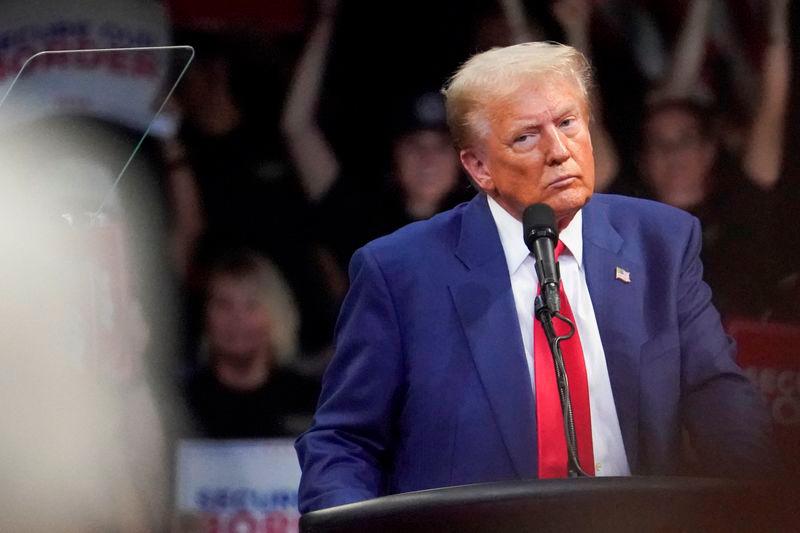A man arrested at a security checkpoint near Republican presidential candidate Donald Trump’s California rally on Saturday faces gun charges after he was found in possession of loaded firearms, multiple passports and a fake license plate, the local sheriff said on Sunday.
Riverside County Sheriff Chad Bianco said he believed his department halted an assassination attempt, though he acknowledged that was “speculation.” The suspect was released on bail on Saturday, jail records showed. A federal official said on Sunday that a federal investigation was underway.
“What we do know is he showed up with multiple passports with different names, an unregistered vehicle with a fake license plate and loaded firearms,“ the sheriff said at a news conference on Sunday afternoon. “I truly do believe that we prevented another assassination attempt.”
The 49-year-old man, identified as Las Vegas resident Vem Miller, was stopped in a black SUV by sheriff’s deputies around 5 p.m. local time on Saturday and taken into custody without incident, according to the sheriff’s office. Trump had not yet taken the stage.
Jail records show Miller was released on $5,000 bail on Saturday after being charged with possession of a loaded firearm and a high-capacity magazine, both misdemeanors. He could not immediately be reached for comment on Sunday.
“The incident did not impact the safety of former President Trump or attendees of the event,“ the sheriff’s office said in a press release.
The U.S. Attorney’s Los Angeles office, in a statement on its web site on Sunday, also said Trump was not in danger, citing the U.S. Secret Service. The statement added that while no federal arrest had been made, an investigation was ongoing.
Trump narrowly survived an assassination attempt in July, when a gunman’s bullet grazed his ear during a campaign rally in Butler, Pennsylvania. In September, another man was charged with trying to assassinate Trump after Secret Service agents discovered him hiding with a rifle near Trump’s Palm Beach golf course. He pleaded not guilty. Those attempts raised questions about Secret Service security planning and response.









